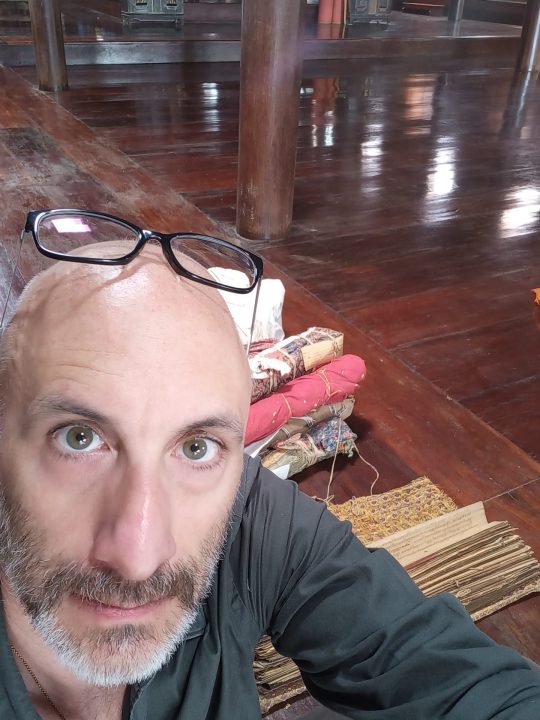Staff Page
McCormick, Patrick

- Research Departments・Position
- Social Coexistence
Affiliated Researcher - Area
- History, Linguistics
- Research Interests / Keywords
- Burma, Historiography, Mon, Contact Linguistics, Burmese dialects, Colonial history, British in Burma
- Contact
- mccormick.yangon@gmail.com
McCormick, Patrick
Overview
My primary stream of research remains the historiography of Burma, the interaction between the classical writing of Burmese history in English during and just after the British colonial period. Through colonial education and the primacy of the English language, British ideas, interpretations, practices and categories have tended to become normative within Burma so that local intellectuals now understand and write their pasts through them. The British in effect created “Burma” as we know it today, together with those other modern subjects of study/subjects of governance/categories of people, the “ethnicities.” Even if Burmese themselves take these creations as normative and natural, earlier indigenous practices, whether in the writing of narratives of the past, or in ideas and practices related to the group, continue to bleed into the present.
A second stream of research concerns language contact, or the effects of multilingualism on the languages which individuals and communities speak. Language contact manifests in the replication of grammatical patterns and material a term which includes, but is not limited to, loanwords. Multilingualism and therefore the manifestations of language contact tend to follow the principle of hierarchy: people tend to learn languages of groups above them, not below them, so that the manifestations of language contact tend to be strongest in languages lower on the hierarchy. In the context of the Greater Burma Zone – a historical area of cultural, political, religious, and artistic contact and convergence based on the lowland maṇḍalas of what is now Burma—we see this for example in the replication of Burmese patterns in various minority languages.
Out of that stream has come my interest in features of several Burmese dialects, which tend to be spoken by small, high-status societies which over time have drawn speakers of other languages to them, and in the process, have introduced features of their original languages into the Burmese dialects. Burmese dialect speakers and their communities are often caught between the older, indigenous tendency to identify themselves with the high-status, maṇḍala-based ethnicity of the Bamā, while also being pulled by the modern logic of “ethnicity,” which demands the creation of a distinct ethnolinguistic-based identity.
A second stream of research concerns language contact, or the effects of multilingualism on the languages which individuals and communities speak. Language contact manifests in the replication of grammatical patterns and material a term which includes, but is not limited to, loanwords. Multilingualism and therefore the manifestations of language contact tend to follow the principle of hierarchy: people tend to learn languages of groups above them, not below them, so that the manifestations of language contact tend to be strongest in languages lower on the hierarchy. In the context of the Greater Burma Zone – a historical area of cultural, political, religious, and artistic contact and convergence based on the lowland maṇḍalas of what is now Burma—we see this for example in the replication of Burmese patterns in various minority languages.
Out of that stream has come my interest in features of several Burmese dialects, which tend to be spoken by small, high-status societies which over time have drawn speakers of other languages to them, and in the process, have introduced features of their original languages into the Burmese dialects. Burmese dialect speakers and their communities are often caught between the older, indigenous tendency to identify themselves with the high-status, maṇḍala-based ethnicity of the Bamā, while also being pulled by the modern logic of “ethnicity,” which demands the creation of a distinct ethnolinguistic-based identity.
